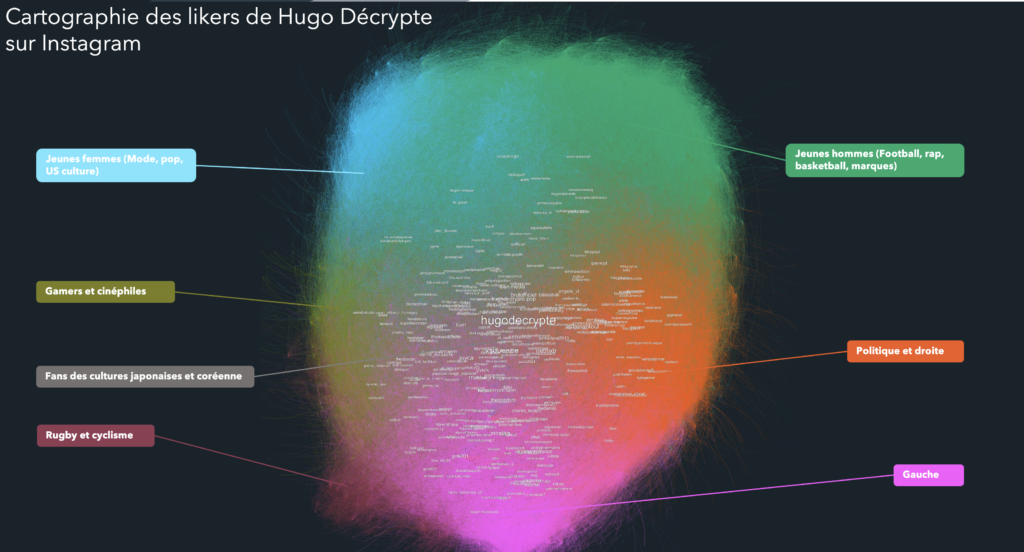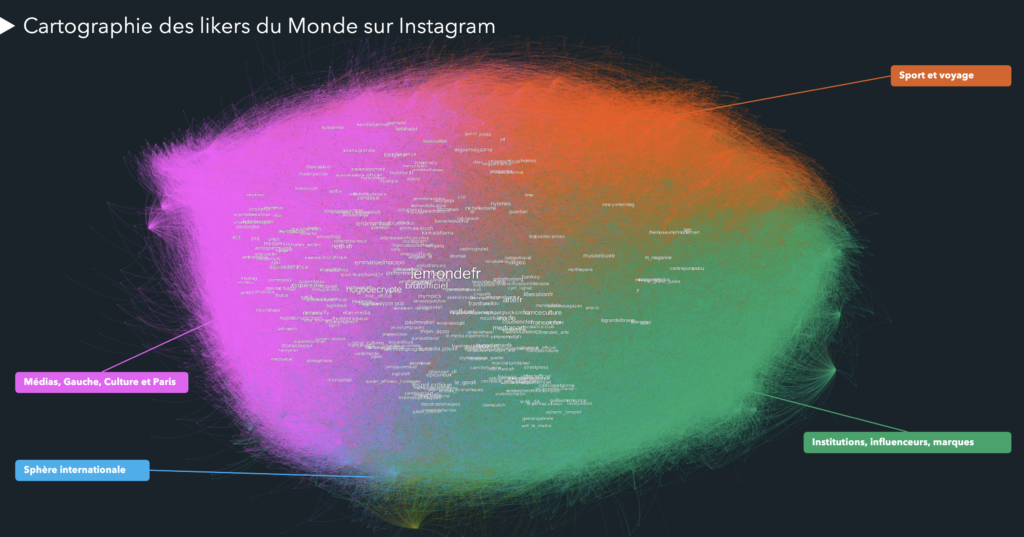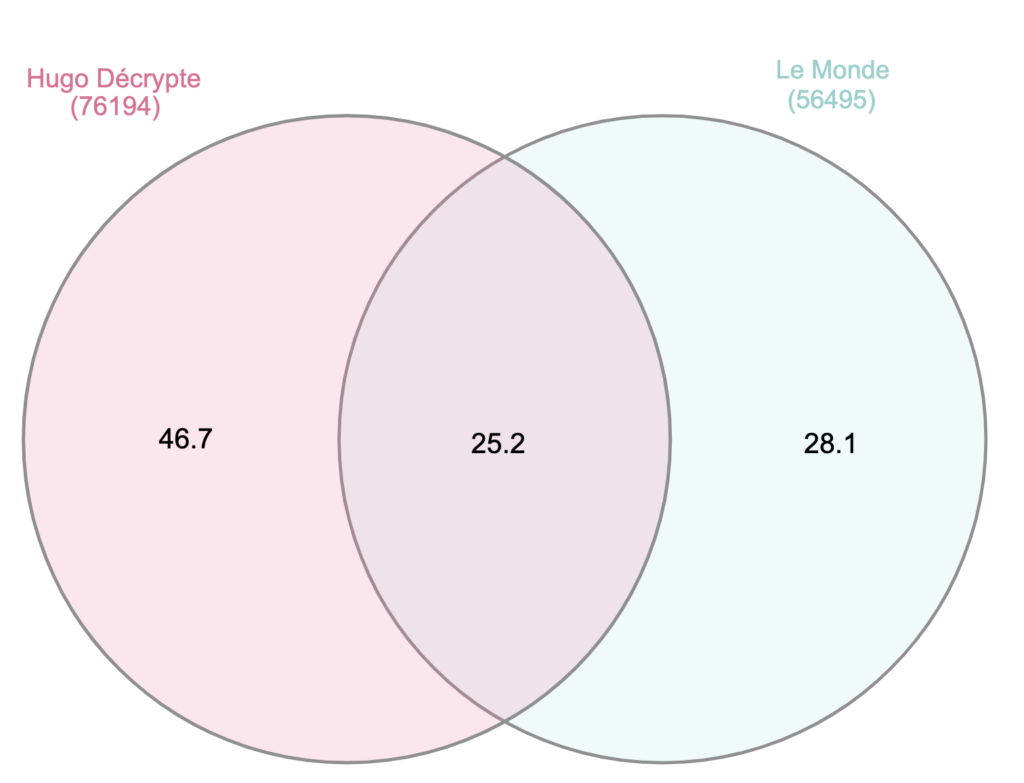Sommaire
Comparative audience analysis between Hugo Décrypte and Le Monde: the impact of format
Offering information produced by young people for young people is the concept behind Hugo Décrypte, which is said to have succeeded in the incredible challenge of communicating serious information to the under-30s.

Its growing popularity on social networks bears witness to a profound change in the way people consume information: on Instagram, Hugo Décrypte has almost twice as many followers as Le Monde, which is often regarded as a journalistic institution in France.
At the head of this medium, Hugo Travers stands out for his ability to capture the attention of young audiences, particularly through accessible and direct formats. His interviews with leading figures, from the President of the Republic to personalities from the artistic world such as Billie Eilish, further enhance his legitimacy with this connected generation. So we asked ourselves a very simple question: is this really the case? How are audiences different?
The summary
A young, mainstream, non-partisan audience
Hugo Décrypte's audience is a masterclass. It has the luxury of being structured with a very general public and marketing segmentation (men/women), while speaking to all political parties (even if it does lean to the left). The account is also the first most followed by the audience that has liked Le Monde. In short, all Hugo Décrypte needs is history, the status of an institution and an audience that is getting older to talk like equals (at least on Instagram).
The format allows Hugo Décrypte to reach a much wider audience than Le Monde.
Le Monde's audience is much more recurrent through the publications that Hugo Décrypte publishes. This makes sense: Le Monde has built up a loyal readership who are followers of, and even subscribers to, Le Média, whereas Hugo Décrypte obtains audiences interested in a news item thanks to the strength of its format.
A lack of bridges between communities
If we take the people who liked Hugo Décrypte and those who liked Le Monde and look at the percentage of correspondence, it is 0.5%. So these are two audiences with different levels of engagement (it should be noted that we have only taken samples of engagement given the volumes we are talking about). However, they have similar interests: 25% of the accounts followed by those who liked Le Monde's account are also followed by those who liked Hugo Décrypte's account.
Methodology on Instagram
For the methodology, we selected the last 15 Instagram publications from Hugo Décrypte and Le Monde. We extracted 1,000 followers per publication on the two accounts. We then analysed how these likers followed each other and the accounts they followed outside the two accounts to gain a better understanding of the audiences.
Hugo Décrypte audiences

The audience is much more diverse, with more individual accounts. The active audience of the Hugo Décrypte account offers a glimpse into the cultural and social dynamics of young French speakers. Two major communities stand out, and it's quite fascinating:
- A women's community based around fashion, pop music and American audiovisual culture.
- A male community attracted by football, rap and basketball.
This is quite rare, but it is in line with the more traditional marketing segmentations that we rarely see when analysing corporate accounts. It's worth noting that only one political figure, Jordan Bardella, manages to transcend these cultural lines to position himself in this core audience.
Apart from these mainstream communities, there are also fans of politics (albeit very slightly, with 8.4% for the left and 4% for the right) with a cluster :
- From the left: accounts of environmental activists (Greenpeace, L214), LGBT+ (LGBT+ Corner) and feminists (NousToutes) coexist with those of political figures such as Jean-Luc Mélenchon and Rima Hassan.
- From the right : figures such as Marine Le Pen and Éric Zemmour are in the same community as Emmanuel Macron, or Gabriel Attal.
Finally, niche communities complete this typology: J-pop and K-pop fans, grouped together in a homogenous sphere where the accounts of two LFI MPs, Sébastien Delogu and David Guiraud, nevertheless appear; rugby, cycling and motor sports fans; and gamers and film buffs.
Basically, it has succeeded in reaching a very generalist and political audience. Hugo Décrypte is not just a medium for young people, it's a medium for social networks.
Le Monde audiences

Le Monde's audience includes young people, but to a much lesser extent than Hugo décrypte. We can see from the large number of institutions followed that audiences follow Le Monde as such. The audience is fairly cultural, fairly Parisian and very much centre-left. At the end of the day, nothing disturbs apart from one fact.... Hugo Décrypte has a strong following among Le Monde subscribers: it's the number one account outside Le Monde. Hugo Décrypte therefore speaks to this audience, even if they don't like its publications. And with good reason: when you look at all the accounts followed by the likers of the two accounts :

25% of accounts are similar. So there are similar spaces, even though only 0.5% have liked both Le Monde and Hugo Décrypte. Common interests, but not necessarily a similar audience!
So we've come full circle: Hugo Décrypte's account and formats reach young people in the same way that they reach traditional media audiences. All that's missing is a reputation, a long-term view and the status of an institution.
A study by Cyril Dugenet and Nicolas Vanderbiest



